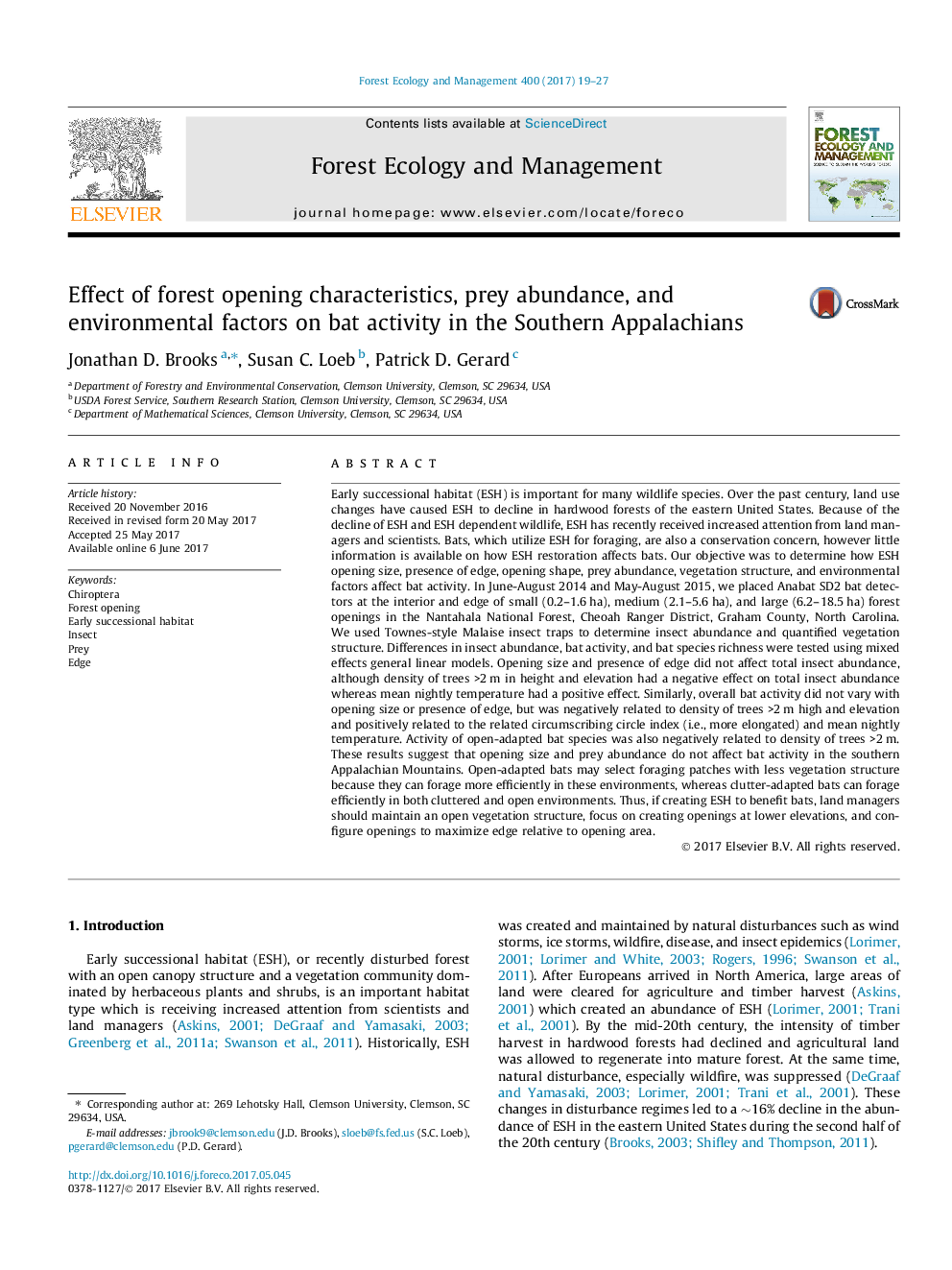| کد مقاله | کد نشریه | سال انتشار | مقاله انگلیسی | نسخه تمام متن |
|---|---|---|---|---|
| 6459200 | 1421358 | 2017 | 9 صفحه PDF | دانلود رایگان |
- Early successional habitat (ESH) and many ESH dependent species are in decline.
- We tested how ESH opening and landscape-level features affect bat activity.
- Bats were more active in elongated openings and area of less vegetation structure.
- Bats may benefit from maintaining open vegetation structure and maximizing edge.
Early successional habitat (ESH) is important for many wildlife species. Over the past century, land use changes have caused ESH to decline in hardwood forests of the eastern United States. Because of the decline of ESH and ESH dependent wildlife, ESH has recently received increased attention from land managers and scientists. Bats, which utilize ESH for foraging, are also a conservation concern, however little information is available on how ESH restoration affects bats. Our objective was to determine how ESH opening size, presence of edge, opening shape, prey abundance, vegetation structure, and environmental factors affect bat activity. In June-August 2014 and May-August 2015, we placed Anabat SD2 bat detectors at the interior and edge of small (0.2-1.6Â ha), medium (2.1-5.6Â ha), and large (6.2-18.5Â ha) forest openings in the Nantahala National Forest, Cheoah Ranger District, Graham County, North Carolina. We used Townes-style Malaise insect traps to determine insect abundance and quantified vegetation structure. Differences in insect abundance, bat activity, and bat species richness were tested using mixed effects general linear models. Opening size and presence of edge did not affect total insect abundance, although density of trees >2Â m in height and elevation had a negative effect on total insect abundance whereas mean nightly temperature had a positive effect. Similarly, overall bat activity did not vary with opening size or presence of edge, but was negatively related to density of trees >2Â m high and elevation and positively related to the related circumscribing circle index (i.e., more elongated) and mean nightly temperature. Activity of open-adapted bat species was also negatively related to density of trees >2Â m. These results suggest that opening size and prey abundance do not affect bat activity in the southern Appalachian Mountains. Open-adapted bats may select foraging patches with less vegetation structure because they can forage more efficiently in these environments, whereas clutter-adapted bats can forage efficiently in both cluttered and open environments. Thus, if creating ESH to benefit bats, land managers should maintain an open vegetation structure, focus on creating openings at lower elevations, and configure openings to maximize edge relative to opening area.
Journal: Forest Ecology and Management - Volume 400, 15 September 2017, Pages 19-27
